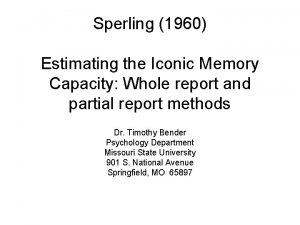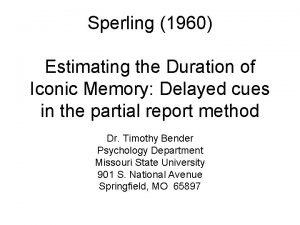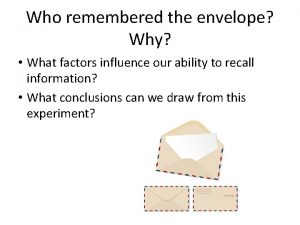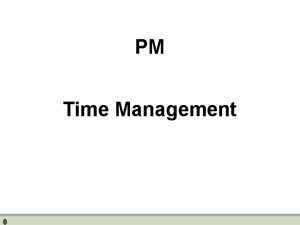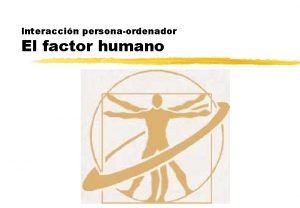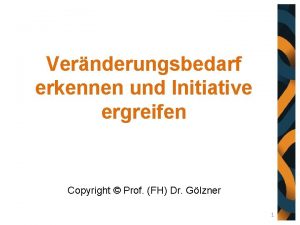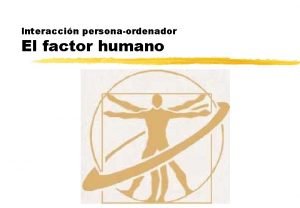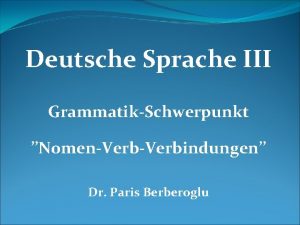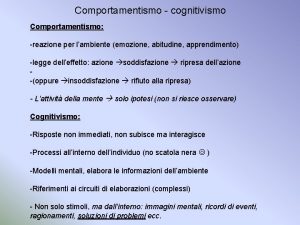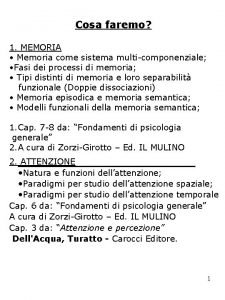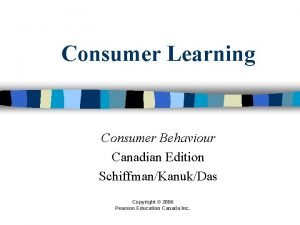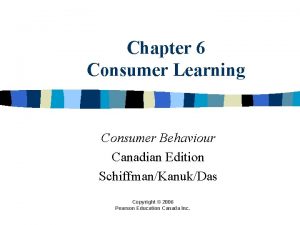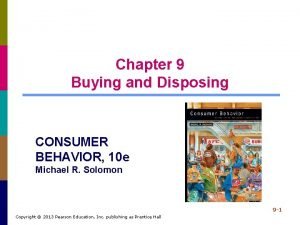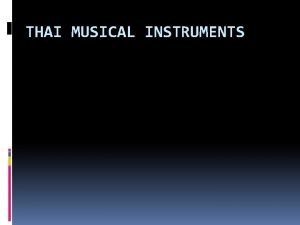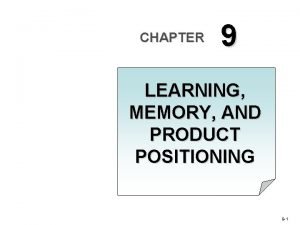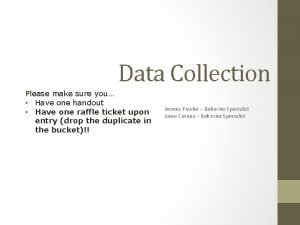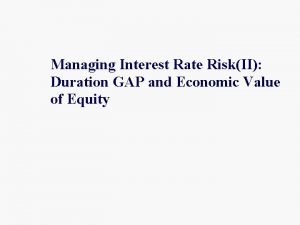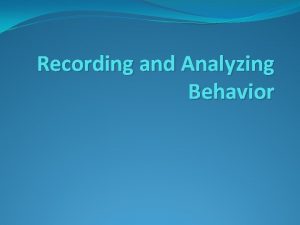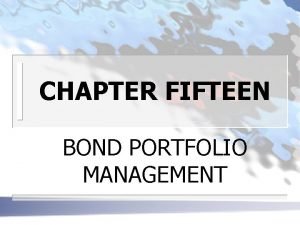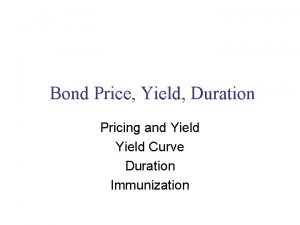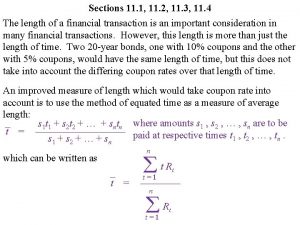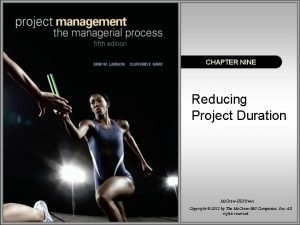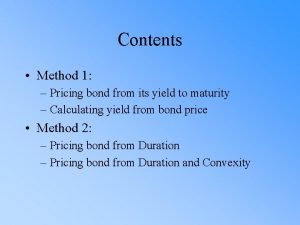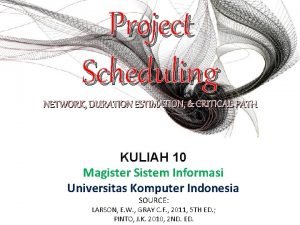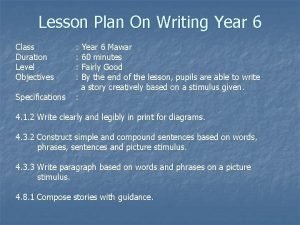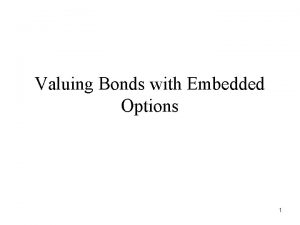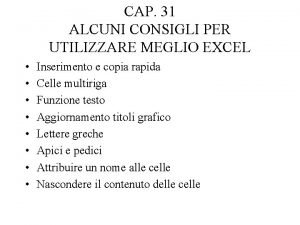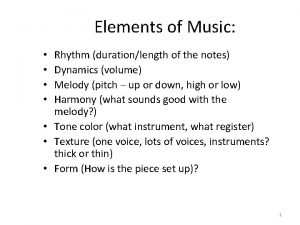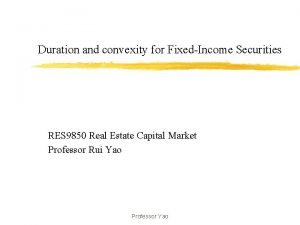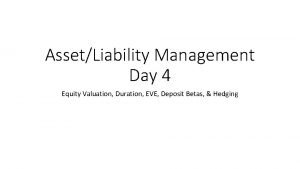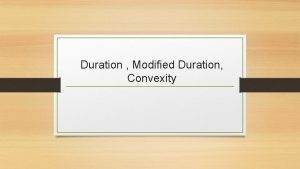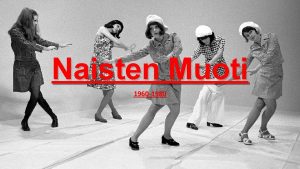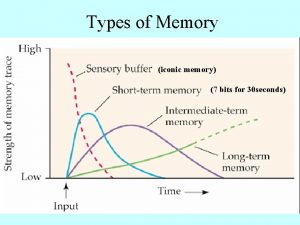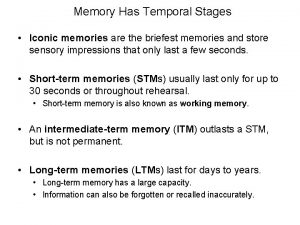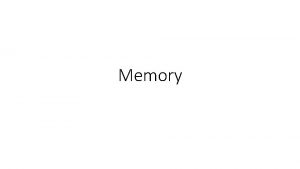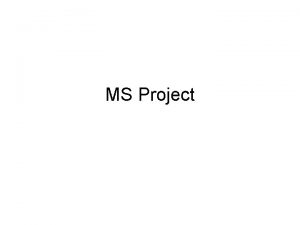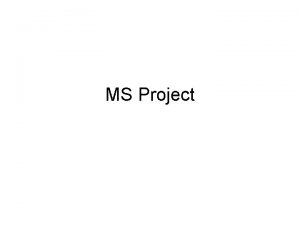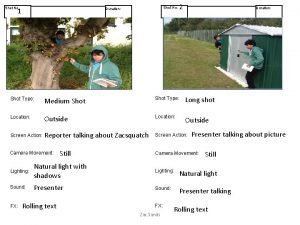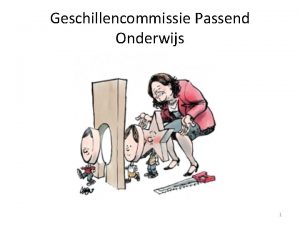Sperling 1960 Estimating the Duration of Iconic Memory




































































































- Slides: 100

Sperling (1960) Estimating the Duration of Iconic Memory: Delayed cues in the partial report method Dr. Timothy Bender Psychology Department Missouri State University 901 S. National Avenue Springfield, MO 65897

Duration In the fourth experiment in Sperling’s (1960) classic study of the characteristics of the iconic memory (visual sensory memory), he explored how long the memory trace might last. He used the Partial Report Method with an added variable – He manipulated the timing of the cue.

Duration In the Partial Report Technique participants see an array of letters with two or more rows, but they are signaled as to which row of the array to report. Usually, the signal is a tone that occurs at the offset of the array.

Duration In his fourth experiment, Sperling manipulated the timing of the cue. The timing levels included • 100 milliseconds before the onset • With the offset • 150 milliseconds after the offset • 300 milliseconds after the offset • 500 milliseconds after the offset

Duration Sperling used both 2 x 3 arrays and 2 x 4 arrays. He also presented each different timing condition in a block of trials. Furthermore, the participants were exposed to two practice trials before each set of arrays. Therefore, the participants became used to each timing.

Duration As you might expect, the best performances were when the cue was just prior to the appearance of the array. The participants performed more poorly as the cued was delayed.

Duration We will do something similar. You will see several slides with auditory cues occurring at different times relative to the presence of the array. Like Sperling’s study, in this demo you will get each timing in blocks. However, the array will be a 3 x 4 array and the sequence of the target rows will be random.

Duration In the first block, you will see 6 different 3 x 4 arrays of letters. Approximately 100 milliseconds before the array appears, you will hear a tone. A high tone means you should record the top row. A medium tone means you should record the middle row. And a low tone means you should record the bottom row.

Duration You will need to listen to the tones a few times in order to recognize which one is high, medium, and low. Move the cursor over this speaker to hear the high tone. Move the cursor over this speaker to hear the medium tone. Move the cursor over this speaker to hear the low tone.

Duration Procedure • After the next slide, you will see 6 stimuli. • Each stimulus will start with a slide telling you to get ready. Click on that slide to see the actual stimulus. • You will then see a + sign in the middle of the screen. Focus on the + sign. • The + sign will remain for about 1 second and will be followed by a 3 x 4 array of letters. • The array will last for about 70 milliseconds. • The tone will occur about 100 milliseconds before the array appears.

Duration Your job is to write down the letters in the row that corresponds to the tone. Record the 4 letters in their correct positions as quickly as you can. It is important that you write down a letter in every position, even if it feels like a guess. However, do NOT just write down all Xs or something like that. Also, do not try to predict which row will be cued. That actually may reduce your overall score.

Get Ready for Stimulus 1


Record your response.

Get Ready for Stimulus 2


Record your response.

Get Ready for Stimulus 3


Record your response.

Get Ready for Stimulus 4


Record your response.

Get Ready for Stimulus 5


Record your response.

Get Ready for Stimulus 6


Record your response.

Duration Scoring • Give yourself one point for each letter in the correct location for all 6 stimuli. • Multiply that number by 3, because there were 3 rows possible. • Divide that number by 6 to get your mean score. 1 GSBQ 4 VSNF 2 SKBS 5 RPFD 3 CBFW 6 PVXR

Duration In the second set, you will see 6 different 3 x 4 arrays of letters. The tone will occur just as the array disappears from the screen. A high tone means you should record the top row. A medium tone means you should record the middle row. And a low tone means you should record the bottom row.

Duration Procedure • After the next slide, you will see 6 stimuli. • Each stimulus will start with a slide telling you to get ready. Click on that slide to see the actual stimulus. • You will then see a + sign in the middle of the screen. Focus on the + sign. • The + sign will remain for about 1 second and will be followed by a 3 x 4 array of letters. • The array will last for about 70 milliseconds. • Then you will hear the tone.

Duration Your job is to write down the letters in the row that corresponds to the tone. Record the 4 letters in their correct positions as quickly as you can. It is important that you write down a letter in every position, even if it feels like a guess. However, do NOT just write down all Xs or something like that. Also, do not try to predict which row will be cued. That actually may reduce your overall score.

Get Ready for Stimulus 1


Record your response.

Get Ready for Stimulus 2


Record your response.

Get Ready for Stimulus 3


Record your response.

Get Ready for Stimulus 4


Record your response.

Get Ready for Stimulus 5


Record your response.

Get Ready for Stimulus 6


Record your response.

Duration Scoring • Give yourself one point for each letter in the correct location for all 6 stimuli. • Multiply that number by 3, because there were 3 rows possible. • Divide that number by 6 to get your mean score. 1 DNWF 4 KHXR 2 BFJZ 5 MYJX 3 FXCJ 6 NZBF

Duration In the third set, you will see 6 different 3 x 4 arrays of letters. The tone will occur approximately 100 milliseconds after the array disappears from the screen. A high tone means you should record the top row. A medium tone means you should record the middle row. And a low tone means you should record the bottom row.

Duration Procedure • After the next slide, you will see 6 stimuli. • Each stimulus will start with a slide telling you to get ready. Click on that slide to see the actual stimulus. • You will then see a + sign in the middle of the screen. Focus on the + sign. • The + sign will remain for about 1 second and will be followed by a 3 x 4 array of letters. • The array will last for about 70 milliseconds. • Then you will hear the tone.

Duration Your job is to write down the letters in the row that corresponds to the tone. Record the 4 letters in their correct positions as quickly as you can. It is important that you write down a letter in every position, even if it feels like a guess. However, do NOT just write down all Xs or something like that. Also, do not try to predict which row will be cued. That actually may reduce your overall score.

Get Ready for Stimulus 1


Record your response.

Get Ready for Stimulus 2


Record your response.

Get Ready for Stimulus 3


Record your response.

Get Ready for Stimulus 4


Record your response.

Get Ready for Stimulus 5


Record your response.

Get Ready for Stimulus 6


Record your response.

Duration Scoring • Give yourself one point for each letter in the correct location for all 6 stimuli. • Multiply that number by 3, because there were 3 rows possible. • Divide that number by 6 to get your mean score. 1 GSBP 4 LXGC 2 QTDV 5 JWGB 3 LYBG 6 PZQD

Duration In the fourth set, you will see 6 different 3 x 4 arrays of letters. The tone will occur approximately 300 milliseconds after the array disappears from the screen. A high tone means you should record the top row. A medium tone means you should record the middle row. And a low tone means you should record the bottom row.

Duration Procedure • After the next slide, you will see 6 stimuli. • Each stimulus will start with a slide telling you to get ready. Click on that slide to see the actual stimulus. • You will then see a + sign in the middle of the screen. Focus on the + sign. • The + sign will remain for about 1 second and will be followed by a 3 x 4 array of letters. • The array will last for about 70 milliseconds. • Then you will hear the tone.

Duration Your job is to write down the letters in the row that corresponds to the tone. Record the 4 letters in their correct positions as quickly as you can. It is important that you write down a letter in every position, even if it feels like a guess. However, do NOT just write down all Xs or something like that. Also, do not try to predict which row will be cued. That actually may reduce your overall score.

Get Ready for Stimulus 1


Record your response.

Get Ready for Stimulus 2


Record your response.

Get Ready for Stimulus 3


Record your response.

Get Ready for Stimulus 4


Record your response.

Get Ready for Stimulus 5


Record your response.

Get Ready for Stimulus 6


Record your response.

Duration Scoring • Give yourself one point for each letter in the correct location for all 6 stimuli. • Multiply that number by 3, because there were 3 rows possible. • Divide that number by 6 to get your mean score. 1 NWJF 4 ZTFV 2 JVHP 5 NZJG 3 WSVP 6 QCMF

Duration In class, compare your class scores for the Pre, Offset, 100 delay, and 300 delay tasks. If you performed similarly to Sperling’s participants, you performed best when the tone occurred just prior to the array and worst with the 300 millisecond delay.

Duration The following tables shows how Sperling’s participants performed with the 3 x 3 and 3 x 4 arrays. You should note two things: 1 The performance became worse as the delay increased. 2 The performance in the 1 second delay condition was close to what Sperling found in his first experiment using the Whole Report Method.

Based on these types of results, Sperling felt that the iconic memory trace was unavailable after a second. Other researchers have since suggested that 250 to 300 milliseconds is a good estimate of the duration of the iconic memory trace.

References Sperling, G. (1960). The information available in brief visual presentations. Psychological Monographs: General and applied, 74, 1 -29.
 Sperling 1960
Sperling 1960 Dr andrew sperling
Dr andrew sperling George sperling iconic memory
George sperling iconic memory Eidetic memory vs iconic memory
Eidetic memory vs iconic memory Activity duration estimating
Activity duration estimating Memoria procedimental
Memoria procedimental Sperling
Sperling Experimento de sperling
Experimento de sperling Sperling
Sperling Condizionamento classico esempi quotidiani
Condizionamento classico esempi quotidiani Multicomponenziale
Multicomponenziale Gerhard roth willensfreiheit ist eine illusion plato schema
Gerhard roth willensfreiheit ist eine illusion plato schema Reisa sperling
Reisa sperling Iconic programming
Iconic programming Iconic rote learning example
Iconic rote learning example Iconic island dwellings
Iconic island dwellings Iconic rote learning example
Iconic rote learning example Domain 3 diversity of learners examples
Domain 3 diversity of learners examples Very iconic
Very iconic Scope of operation research
Scope of operation research Iconic transfer ritual
Iconic transfer ritual Jakhe country of origin and classification
Jakhe country of origin and classification Iconic rote learning
Iconic rote learning Long term memory vs short term memory
Long term memory vs short term memory Which memory is the actual working memory?
Which memory is the actual working memory? Shared memory vs distributed memory
Shared memory vs distributed memory Internal memory and external memory
Internal memory and external memory Episodic memory
Episodic memory Page fault
Page fault Primary memory and secondary memory
Primary memory and secondary memory Explicit memory
Explicit memory Logical address
Logical address Virtual memory in memory hierarchy consists of
Virtual memory in memory hierarchy consists of Các châu lục và đại dương trên thế giới
Các châu lục và đại dương trên thế giới Sự nuôi và dạy con của hổ
Sự nuôi và dạy con của hổ Bổ thể
Bổ thể Dạng đột biến một nhiễm là
Dạng đột biến một nhiễm là Thế nào là sự mỏi cơ
Thế nào là sự mỏi cơ độ dài liên kết
độ dài liên kết Chúa yêu trần thế
Chúa yêu trần thế Thiếu nhi thế giới liên hoan
Thiếu nhi thế giới liên hoan Tia chieu sa te
Tia chieu sa te điện thế nghỉ
điện thế nghỉ Một số thể thơ truyền thống
Một số thể thơ truyền thống Cong thức tính động năng
Cong thức tính động năng Tỉ lệ cơ thể trẻ em
Tỉ lệ cơ thể trẻ em Hệ hô hấp
Hệ hô hấp Bảng số nguyên tố
Bảng số nguyên tố đặc điểm cơ thể của người tối cổ
đặc điểm cơ thể của người tối cổ Các châu lục và đại dương trên thế giới
Các châu lục và đại dương trên thế giới Môn thể thao bắt đầu bằng từ chạy
Môn thể thao bắt đầu bằng từ chạy ưu thế lai là gì
ưu thế lai là gì Hình ảnh bộ gõ cơ thể búng tay
Hình ảnh bộ gõ cơ thể búng tay Tư thế ngồi viết
Tư thế ngồi viết Thẻ vin
Thẻ vin Cái miệng nó xinh thế
Cái miệng nó xinh thế Trời xanh đây là của chúng ta thể thơ
Trời xanh đây là của chúng ta thể thơ Mật thư tọa độ 5x5
Mật thư tọa độ 5x5 Gấu đi như thế nào
Gấu đi như thế nào Từ ngữ thể hiện lòng nhân hậu
Từ ngữ thể hiện lòng nhân hậu Tư thế ngồi viết
Tư thế ngồi viết Giọng cùng tên là
Giọng cùng tên là Thơ thất ngôn tứ tuyệt đường luật
Thơ thất ngôn tứ tuyệt đường luật Thế nào là hệ số cao nhất
Thế nào là hệ số cao nhất Hổ đẻ mỗi lứa mấy con
Hổ đẻ mỗi lứa mấy con Slidetodoc
Slidetodoc Diễn thế sinh thái là
Diễn thế sinh thái là Vẽ hình chiếu vuông góc của vật thể sau
Vẽ hình chiếu vuông góc của vật thể sau 101012 bằng
101012 bằng Thang điểm glasgow
Thang điểm glasgow Thế nào là mạng điện lắp đặt kiểu nổi
Thế nào là mạng điện lắp đặt kiểu nổi Lời thề hippocrates
Lời thề hippocrates Vẽ hình chiếu đứng bằng cạnh của vật thể
Vẽ hình chiếu đứng bằng cạnh của vật thể đại từ thay thế
đại từ thay thế Quá trình desamine hóa có thể tạo ra
Quá trình desamine hóa có thể tạo ra Duration recording behavior data sheet
Duration recording behavior data sheet Project duration
Project duration Duration gap model
Duration gap model Gamsat dates
Gamsat dates Duration recording example
Duration recording example Bond portfolio management project
Bond portfolio management project Modified duration
Modified duration Project management notes for ese
Project management notes for ese Duration of portfolio
Duration of portfolio Effective duration formula
Effective duration formula Fire extinguisher pull
Fire extinguisher pull Project cost duration graph
Project cost duration graph Load duration curve excel
Load duration curve excel Project cost duration graph
Project cost duration graph Duration investopedia
Duration investopedia Convexity duration formula
Convexity duration formula Duration estimation
Duration estimation Duration of lesson plan
Duration of lesson plan Duration gap analysis
Duration gap analysis Effective duration formula
Effective duration formula Micro lesson framework
Micro lesson framework Tir excel
Tir excel Antiepileptic drugs classification
Antiepileptic drugs classification The beat stays the same
The beat stays the same Dollar convexity formula
Dollar convexity formula Non maturity deposit decay rates
Non maturity deposit decay rates
